Indonesia’s first publicly listed tech unicorn, Bukalapak, became one of Southeast Asia’s biggest online shopping success stories, now serving over 270 million people across the archipelago. What started as a simple marketplace for Indonesian SMEs in 2010 evolved into an all-commerce platform that successfully competed against well-funded global giants by really understanding their customers and building genuine relationships.

Table of Contents
-
Understanding Bukalapak’s Foundation and Market Context
-
Growth Strategies and Market Expansion Tactics
-
Digital Transformation Challenges and Solutions
-
Strategic Lessons and Real-World Applications
-
Final Thoughts
TL;DR
-
Bukalapak succeeded by focusing on underserved SMEs and smaller cities while competitors chased urban markets
-
Mobile-first design and local payment integration were crucial for capturing Indonesia’s unique consumer base
-
Smart partnerships with banks and logistics companies accelerated growth without burning massive amounts of cash
-
Gamification and referral programs tailored to Indonesian social dynamics drove organic user growth
-
Quality control systems and scalable customer service maintained trust during rapid expansion
-
Deep understanding of local culture proved more valuable than pure technology advantages
-
Data-driven decisions enabled precise market predictions and operational optimization
Understanding Bukalapak’s Foundation and Market Context
When Achmad Zaky started Bukalapak back in 2010, Indonesia’s online shopping scene was pretty much a wasteland. Most people didn’t trust buying stuff online, internet was spotty at best, and every e-commerce company was fighting over the same handful of customers in Jakarta. I’ve looked at tons of startup stories from emerging markets, but this Bukalapak case study really stands out because they did something most companies are too impatient to do – they actually figured out what Indonesian customers really wanted.
Here’s the thing that impressed me most: they didn’t try to copy Amazon’s playbook and hope it would work. They built something that made sense for Indonesia from day one. And honestly, in a market where getting the culture wrong can kill your business overnight, this wasn’t just smart – it was survival.
Their mission sounds simple on paper – help 21 million small businesses get online and make shopping accessible beyond the big cities. But anyone who’s tried to do business across 17,000 islands knows this is incredibly hard to pull off. The founders understood they’d need patience, local expertise, and systems built specifically for how Indonesians actually live and shop.
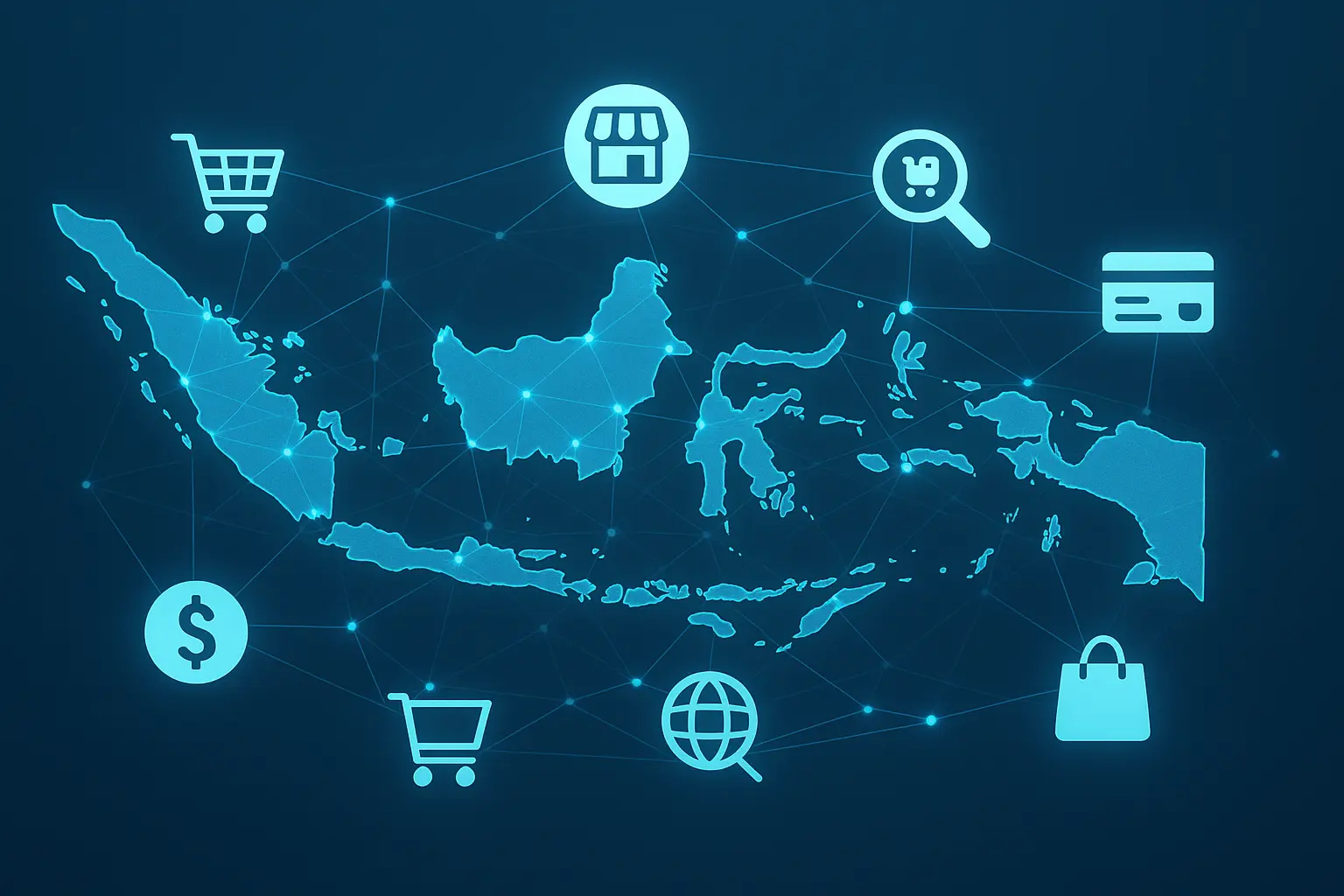
Indonesian E-commerce Landscape Analysis
Indonesia was this fascinating contradiction for online retailers. You had nearly 300 million people getting online fast, but also thousands of scattered islands, unreliable infrastructure, and a culture where people still preferred cash for everything. Most international companies saw those population numbers and jumped in with their standard global playbooks.
The regulatory mess made everything worse. Foreign companies couldn’t just throw money at the problem and buy their way to the top. Local companies like Bukalapak had built-in advantages, but only if they could actually execute without screwing it up.
Similar to how smart businesses today dig deep into their target markets through comprehensive market sizing analysis, Bukalapak spent months just watching how Indonesians actually shopped, what payment methods they trusted, and how they decided whether to trust a new service. Most startups skip this boring research phase and pay for it later. For Bukalapak, it became their secret weapon.
The numbers told part of the story – Indonesia’s internet economy hit $40 billion in 2019, growing at 49% per year since 2015. But the real opportunity was understanding that this growth wasn’t happening evenly. While everyone else fought over Jakarta’s wealthy shoppers, there were millions of potential customers in smaller cities that nobody was paying attention to.
Market Penetration Strategies
While Tokopedia and the international players were burning cash trying to dominate Jakarta, Bukalapak quietly took over places like Bandung, Surabaya, and hundreds of smaller cities most people couldn’t even pronounce. They realized these markets had completely different needs – different price points, different trust requirements, different ways of making decisions.
The strategy wasn’t just about geography. Small business owners in these cities needed way more hand-holding, more flexible payment options, and features that felt more like community support than corporate efficiency. Bukalapak built these capabilities while their competitors were obsessing over transaction volumes in the major metros.
This required serious patience. Each customer was worth less money initially, but they stuck around way longer. When these smaller markets eventually exploded (which they did), Bukalapak already owned those relationships.
|
Market Segment |
Bukalapak Focus |
Competitor Focus |
Key Differentiation |
|---|---|---|---|
|
Tier-1 Cities (Jakarta, Surabaya) |
Secondary priority |
Primary focus |
Community features vs. transaction volume |
|
Tier-2/3 Cities |
Primary focus |
Limited presence |
Local payment methods, merchant support |
|
Small Merchants (SMEs) |
Core target |
Afterthought |
Training programs, flexible commission |
|
Large Retailers |
Limited focus |
Primary target |
Personalized service vs. volume discounts |
Regulatory Navigation Framework
Indonesian e-commerce regulations were changing constantly during Bukalapak’s growth phase. What was legal last month might get you fined this month. Companies that built compliance into their DNA from the start had huge advantages over those scrambling to catch up every time new rules dropped.
Bukalapak’s legal team worked directly with government agencies to understand not just current regulations, but what might be coming next. This meant they could adapt quickly when new rules hit, while competitors spent months figuring out how to stay compliant.
The foreign investment restrictions actually helped Bukalapak. While international players had to navigate complex ownership structures and get approval from overseas headquarters for every decision, Bukalapak could move fast and make changes immediately.
When Indonesia implemented new tax collection requirements for online platforms in 2019, Bukalapak had already built automatic tax calculation into their merchant tools. While competitors spent months scrambling to build compliance solutions, Bukalapak’s merchants could immediately generate proper tax paperwork. That kind of operational advantage is huge when you’re trying to keep merchants happy during stressful transitions.
Consumer Trust Building Mechanisms
Trust was absolutely everything in early Indonesian e-commerce. Cash-on-delivery wasn’t just a payment option – it was the only way most people felt safe buying online. Customers wanted to see products before paying, and sellers wanted guaranteed payment before shipping. Bukalapak built systems that protected both sides without making the process painful.
But they went way beyond transaction security. They created community features so users could see real reviews from people in their actual social networks. They partnered with local influencers who had genuine credibility in specific regions, not just whoever had the most followers. They even built customer service in local languages and dialects.
Building trust was slow, but it compounded. Each happy customer became someone who could vouch for the platform within their social circles. This organic growth was way more sustainable than paid advertising, especially when you’re targeting price-sensitive markets.
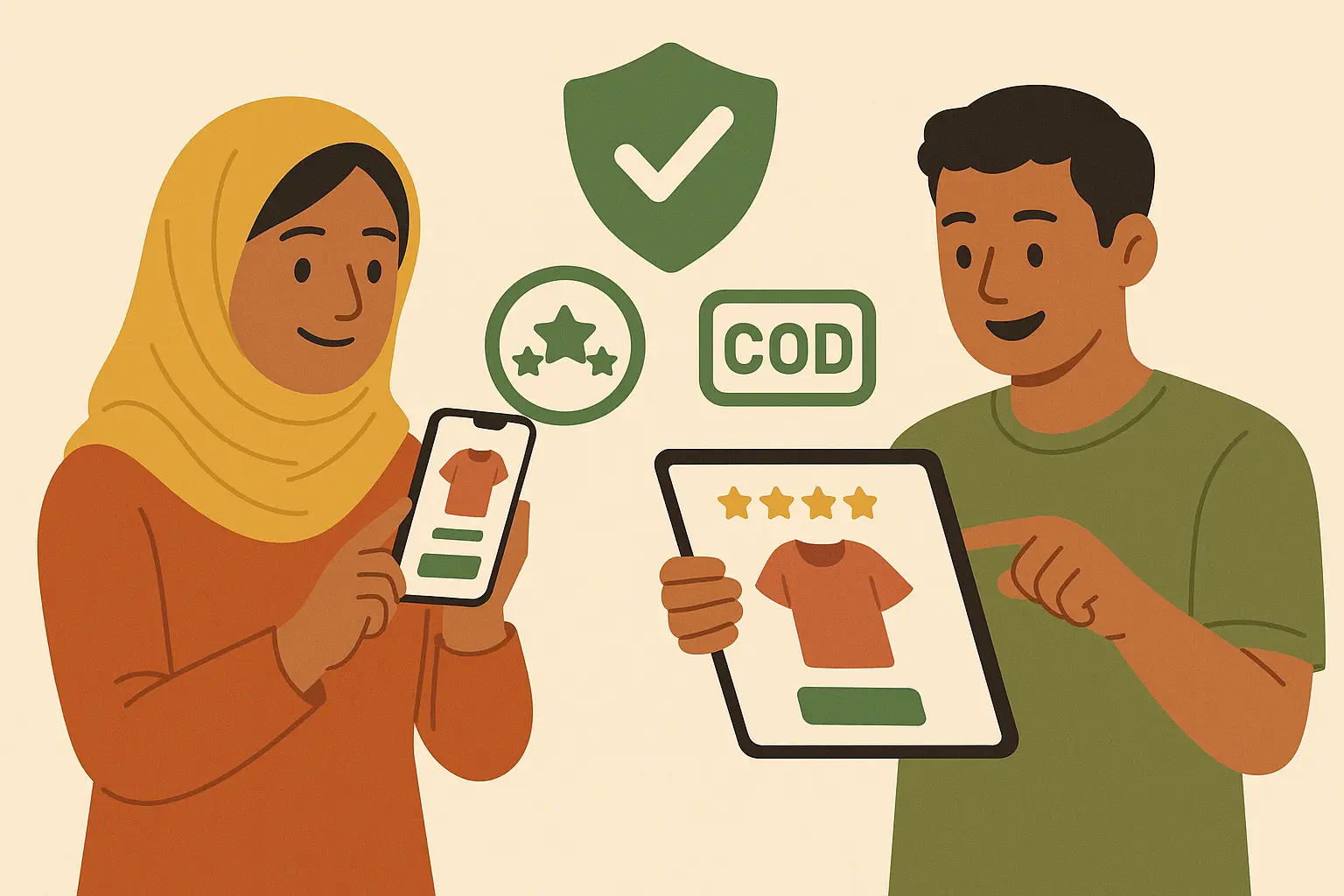
Business Model Innovation
Most e-commerce platforms treat merchants like interchangeable inventory suppliers. Bukalapak built their entire model around actually helping small business owners succeed online. This wasn’t just good PR – it created switching costs and network effects that were incredibly hard for competitors to break.
Their commission structure favored smaller merchants over big retailers. Their marketing tools were designed for businesses that didn’t have dedicated e-commerce teams. Their logistics partnerships prioritized coverage in smaller cities where individual merchants couldn’t negotiate decent shipping rates on their own.
This SME focus created a virtuous cycle that was beautiful to watch. Happy merchants brought their customers to the platform. Successful merchants expanded their product lines and invested more in the platform. The community aspect meant merchants actually helped each other succeed, which reduced Bukalapak’s support costs.
SME Empowerment Strategy
Most small business owners in Indonesia had zero digital commerce skills when they joined Bukalapak. The company could have just provided a platform and let merchants figure it out themselves, but they took a much more hands-on approach that paid off in incredible merchant loyalty.
They created training programs covering everything from taking decent product photos to managing inventory. They built simple tools that automated complex stuff like tax calculations and shipping logistics. They even provided marketing support to help merchants optimize their listings and reach more customers.
The investment in merchant success was expensive, but it created competitive advantages that were nearly impossible to copy. Merchants who succeeded on Bukalapak became platform evangelists who recruited other businesses and defended against competitive offers.
Bukalapak’s commitment to merchant success has evolved into comprehensive support systems. Now they offer “technology hub partnerships” that give merchants access to Big Data, IoT, AI and R&D activities. It’s pretty amazing watching a small marketplace grow into something that helps merchants leverage cutting-edge tech for business growth.
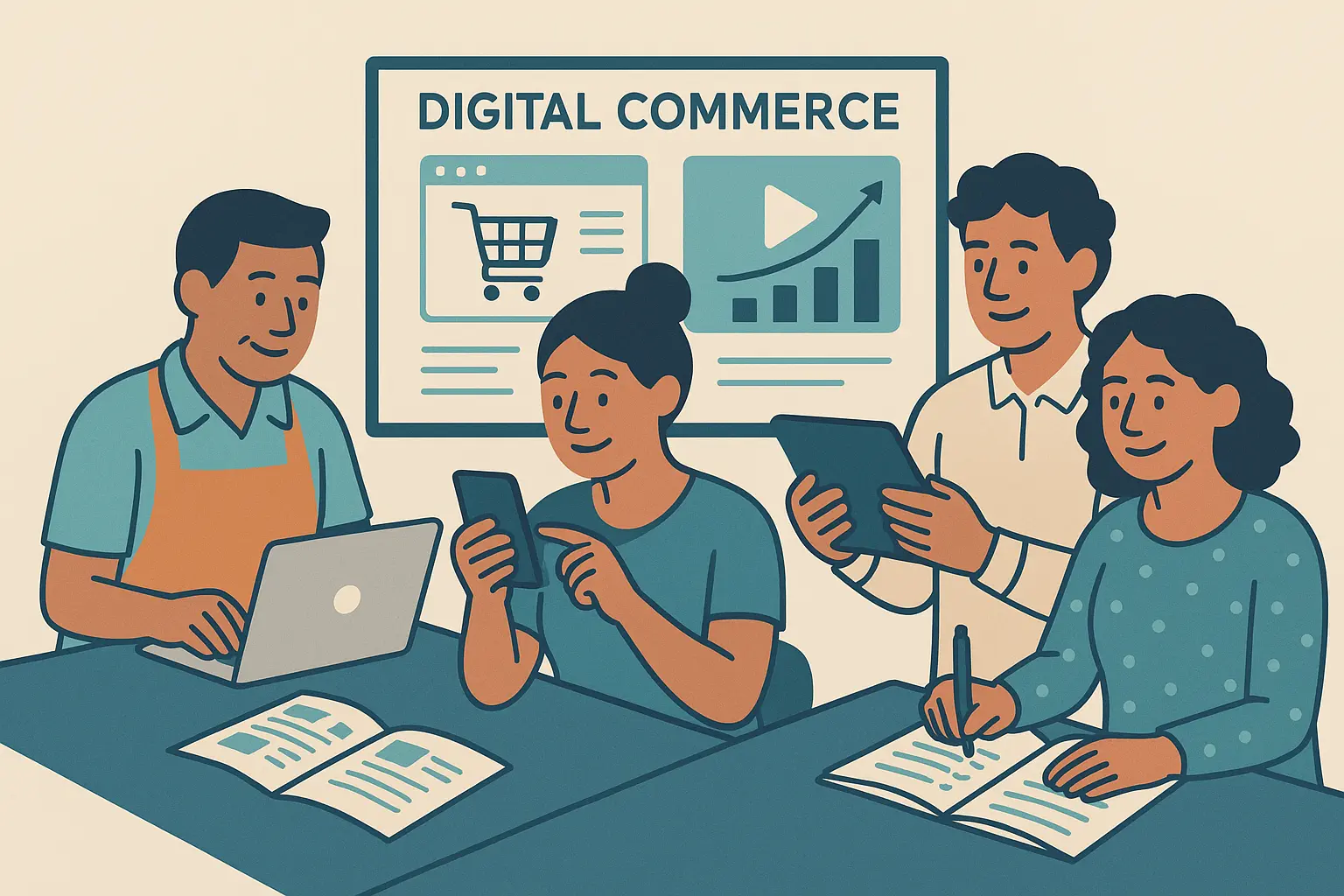
Technology Infrastructure Development
Indonesia’s tech infrastructure challenges were unlike anything most global e-commerce companies had ever seen. You needed systems that worked on slow internet, basic smartphones, and intermittent power. Standard e-commerce platforms weren’t built for these constraints.
Just as modern businesses need advanced analytics for strategic growth, Bukalapak’s engineering team made architectural decisions that prioritized reliability over flashy features. They built lightweight mobile apps that worked well on 2G connections. They created offline capabilities that let users browse and save products even when connectivity was terrible.
These infrastructure investments weren’t sexy, but they were essential for actually serving their target markets. While competitors struggled with high bounce rates and frustrated users in smaller cities, Bukalapak’s platform worked consistently across Indonesia’s crazy diverse connectivity landscape.
Mobile-First Architecture
Desktop e-commerce was never really viable in Indonesia. Most users accessed the internet exclusively through mobile devices, often with limited data plans and slower processors. Bukalapak built their entire platform around these constraints from day one.
Their mobile app was designed for efficiency above all else. Images were optimized for fast loading on slow connections. Navigation was simplified to reduce data usage. Core functions like search and checkout worked reliably even when network conditions were awful.
This mobile-first approach became a huge competitive advantage when smartphone adoption took off. While competitors were trying to cram desktop-focused platforms into mobile apps, Bukalapak’s app was already optimized for the mobile experience Indonesian consumers actually preferred.
Bukalapak’s mobile app included this brilliant “offline browsing” feature that cached product listings and images when users had good connectivity, so they could keep shopping even during network outages. This was particularly valuable for users in rural areas with inconsistent internet, leading to 40% higher session completion rates compared to competitors.
Payment System Integration
Payment systems in Indonesia were a complete mess during Bukalapak’s growth phase. You had traditional bank transfers, cash-on-delivery services, convenience store payments, and emerging digital wallets all competing for adoption. Bukalapak had to support all of them effectively.
Cash-on-delivery was particularly complex to implement well. It required partnerships with logistics companies, cash collection systems, and fraud prevention mechanisms. Many platforms offered COD as an afterthought, but Bukalapak built it as a core capability with proper operational support.
The payment integration work was expensive and complex, but it removed friction from the purchase process. Users could pay however they preferred, which was essential for converting first-time online shoppers who were still building trust in digital commerce.
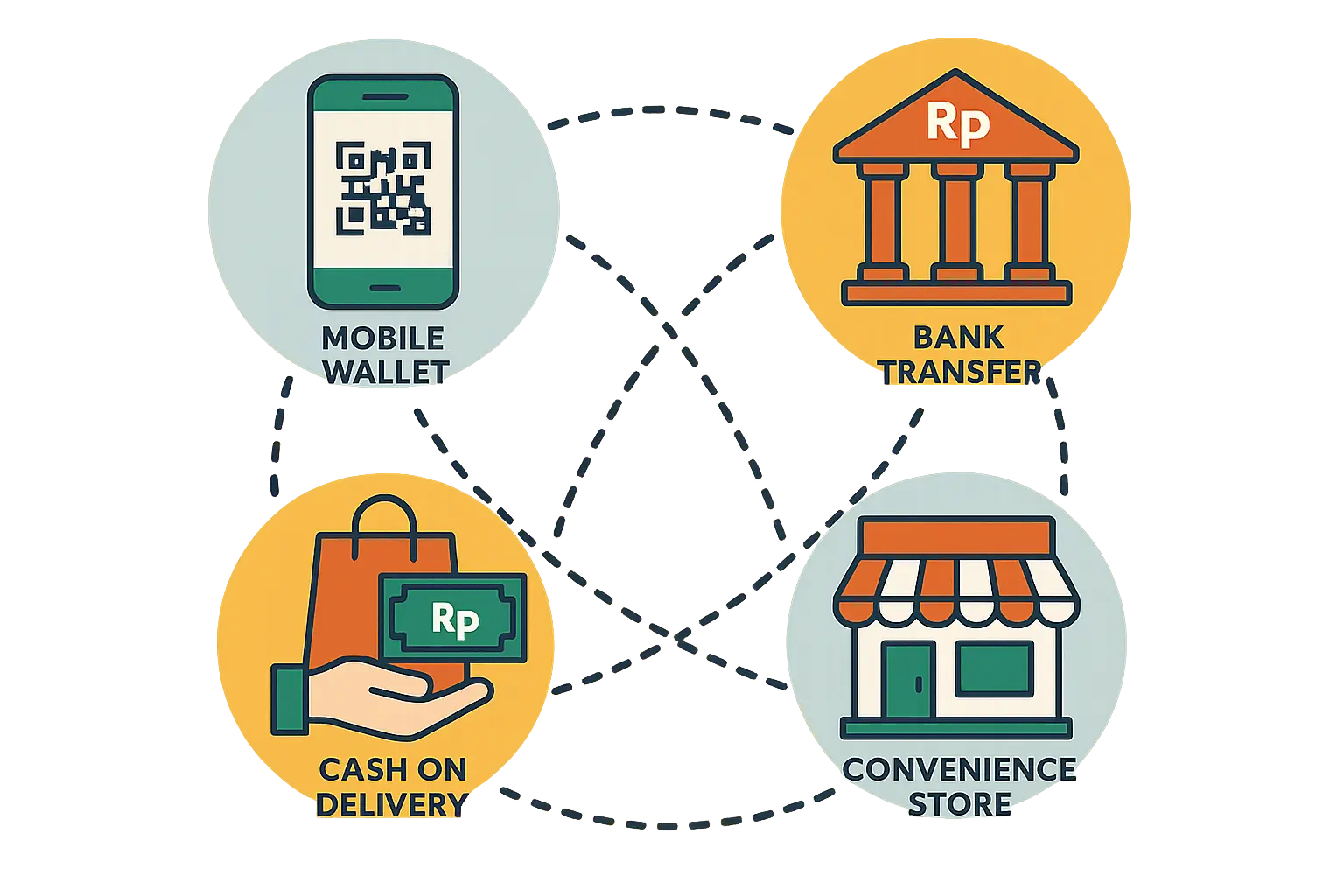
Logistics Network Optimization
Indonesia’s logistics challenges are legendary – over 17,000 islands, inconsistent infrastructure, and vast distances between population centers. Standard logistics models that worked in other markets were completely useless for Indonesian e-commerce.
Bukalapak partnered with local logistics companies that actually understood regional challenges and had existing distribution networks. They built hub-and-spoke systems that could consolidate shipments efficiently. They even worked with traditional distribution channels like local stores and motorcycle couriers.
The logistics optimization wasn’t just about cost – it was about reliability. Customers in smaller cities needed predictable delivery times and reliable tracking information. Bukalapak’s logistics partnerships prioritized consistency over speed, which matched customer expectations way better than competitors who promised fast delivery but failed to execute reliably.
Growth Strategies and Market Expansion Tactics
Scaling an e-commerce platform in Indonesia required completely different strategies than most global markets. High customer acquisition costs, diverse regional preferences, and infrastructure limitations meant that traditional growth tactics often failed spectacularly or became unsustainably expensive.
Bukalapak’s growth strategy emphasized organic expansion and strategic partnerships over pure marketing spend. They built systems that encouraged word-of-mouth referrals, created community features that increased engagement, and partnered with established companies to access new customer segments efficiently.
The approach required serious patience and discipline. Growth rates were sometimes slower than venture-funded competitors, but they actually made money on each customer instead of losing it. This foundation became crucial during competitive pressure and market downturns.
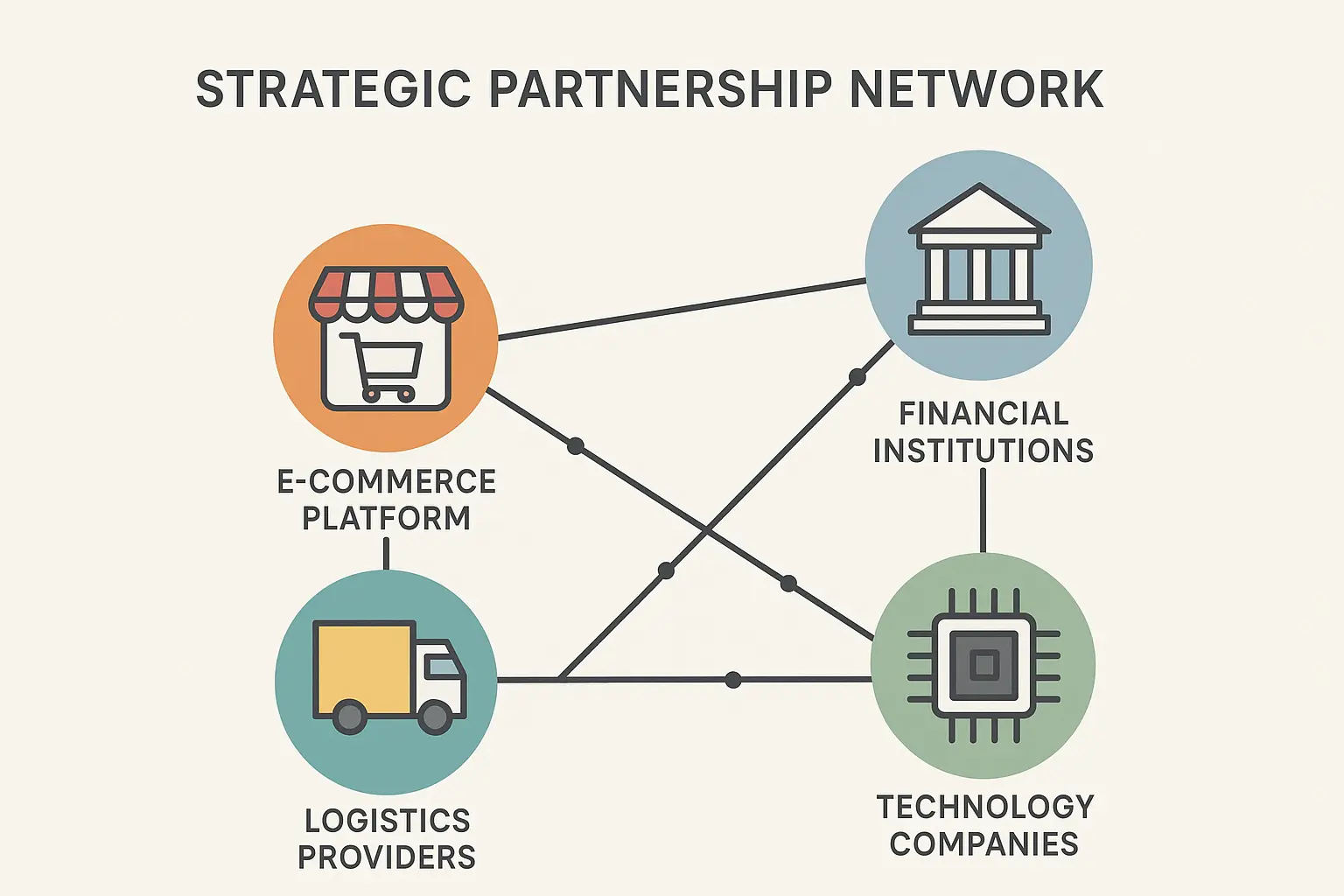
Strategic Partnership Development
Partnership strategy was absolutely central to Bukalapak’s expansion model. Rather than trying to build every capability internally, they identified strategic partners who could provide complementary services while sharing customer acquisition costs and risks.
Financial services partnerships were particularly valuable. Banks provided credibility and access to existing customer bases. Payment processors offered technical capabilities and regulatory compliance. Insurance companies added transaction protection that increased consumer confidence.
The partnership approach required careful relationship management and aligned incentives, but it allowed Bukalapak to scale faster than their internal resources would have permitted. Partners brought customers, capabilities, and credibility that accelerated market penetration.
After attracting investors like Microsoft and UBS Group and growing to over 2000 Indonesian-based employees, Bukalapak realized their talent requirements for technology and engineering were becoming way more complex. This led to their strategic decision to establish international partnerships for accessing specialized talent and capabilities.
Financial Services Integration
Financial services integration was a natural evolution of Bukalapak’s marketplace model. Users needed credit for purchases, merchants needed working capital, and both groups needed better payment solutions. Rather than just referring these needs to external providers, Bukalapak built integrated solutions.
BukaDana provided consumer credit that made higher-value purchases accessible to price-sensitive customers. Merchant financing helped small businesses invest in inventory and growth. Digital wallet functionality simplified payments and reduced transaction costs.
These financial services created switching costs that made users way less likely to migrate to competing platforms. They also generated additional revenue streams that improved overall unit economics and reduced dependence on transaction fees alone.
User Acquisition and Retention Tactics
User acquisition in Indonesia required understanding local social dynamics and communication patterns. Standard digital marketing approaches that worked in Western markets often failed because they didn’t account for how Indonesians actually discovered and evaluated new products and services.
Similar to how businesses today must calculate marketing ROI to optimize their campaigns, Bukalapak’s acquisition strategy emphasized community building and social proof over traditional advertising. They created features that encouraged users to share experiences with their networks. They partnered with local influencers who had genuine credibility in specific regions and demographics.
Retention was equally important and required different tactics than pure transaction platforms. Bukalapak built community features, loyalty programs, and engagement mechanisms that kept users active even when they weren’t actively shopping.
Bukalapak’s user acquisition success is evident in their advanced marketing capabilities. They achieved “5X higher ROAS than standard shopping efforts while driving 4X more conversions” through Smart Shopping campaigns that leverage machine learning to optimize ad placement across multiple channels.
Gamification Implementation
Gamification wasn’t just about slapping points and badges on everything – it was about creating engagement loops that matched Indonesian social and cultural preferences. Users earned rewards for activities that actually benefited the platform ecosystem, like writing reviews, referring friends, and completing purchases.
The game elements were integrated subtly into core platform functions rather than feeling like separate gimmicky features. Daily check-ins, achievement unlocks, and social competitions created reasons for users to return to the platform regularly, even when they weren’t actively shopping.
This engagement strategy was particularly effective for younger users and helped build habitual usage patterns that increased lifetime value. Users who engaged with gamification features had significantly higher retention rates and transaction frequencies.

Referral Program Optimization
Referral programs in Indonesia needed to account for strong social networks and high trust requirements for new services. Standard referral bonuses weren’t enough – the programs needed to work within existing social dynamics and provide real value to both referrers and new users.
Bukalapak’s referral system provided meaningful rewards that actually justified the social risk of recommending a new platform. They also created tools that made sharing easy and natural within Indonesian communication preferences, including WhatsApp integration and social media sharing.
The referral optimization was ongoing, with constant testing of reward structures, sharing mechanisms, and targeting criteria. Successful referral programs became a significant source of high-quality users who had way higher retention rates than users acquired through paid channels.
|
Referral Program Element |
Traditional Approach |
Bukalapak’s Indonesian Approach |
Result |
|---|---|---|---|
|
Reward Structure |
Fixed cash bonus |
Tiered rewards + social recognition |
3x higher participation |
|
Sharing Mechanism |
Email/SMS only |
WhatsApp + social media integration |
5x more shares |
|
Trust Building |
Generic testimonials |
Network-based social proof |
40% higher conversion |
|
Cultural Adaptation |
One-size-fits-all |
Regional customization |
2x regional engagement |
Digital Transformation Challenges and Solutions
Digital transformation at Bukalapak’s scale involved constant problem-solving and adaptation. Every growth phase brought new challenges that required innovative solutions and strategic pivots. The company’s ability to navigate these challenges while maintaining growth momentum was crucial to their long-term success.
Competitive pressure was absolutely relentless, with well-funded international players and aggressive local competitors constantly threatening market share. Operational scaling required building systems and processes that could handle exponential growth without completely breaking. Financial management became increasingly complex as the company grew and prepared for public markets.
The solutions Bukalapak developed weren’t always perfect, but they were pragmatic and effective for their specific market conditions. Understanding these challenges and solutions provides valuable insights for other companies facing similar transformation pressures.
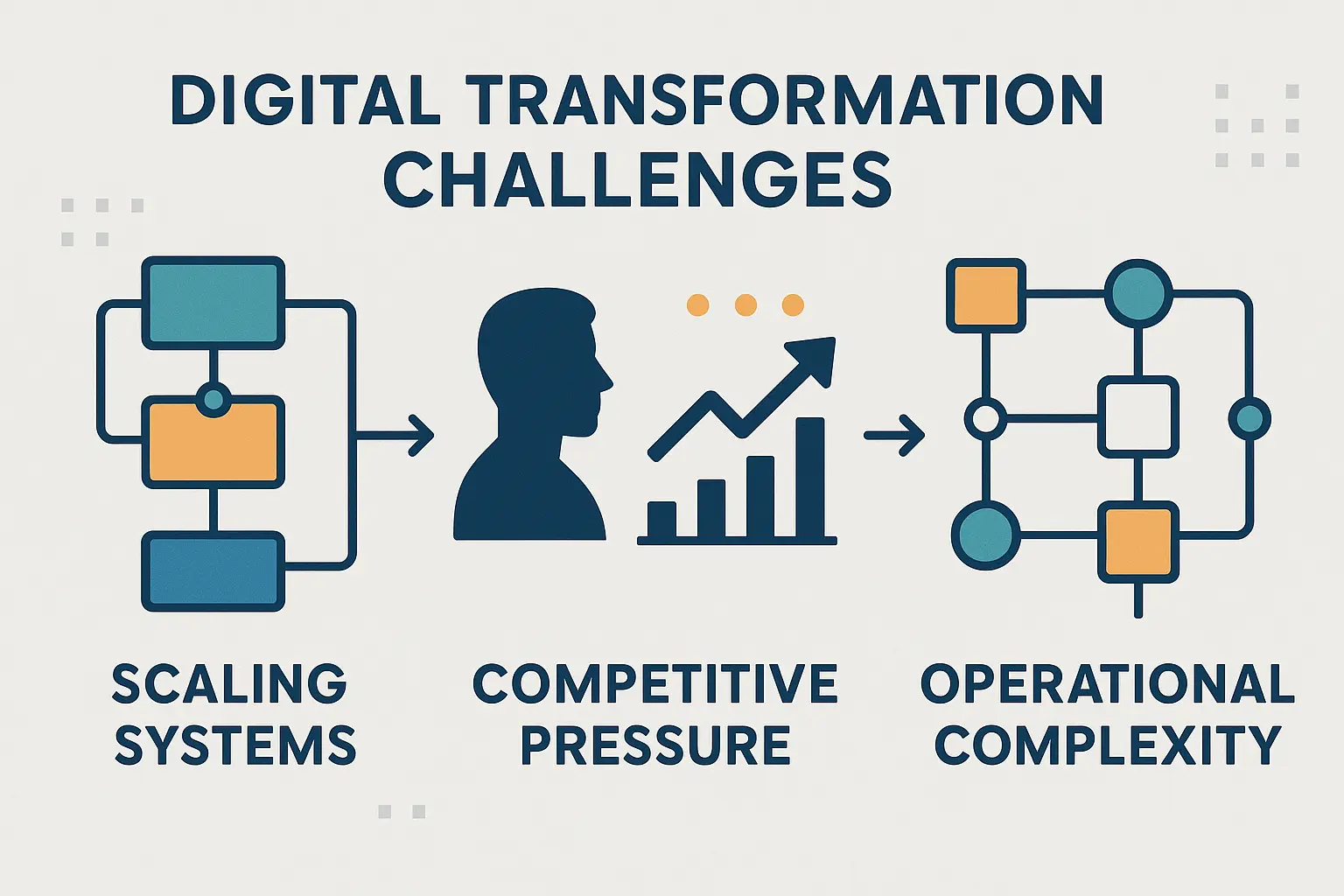
Competitive Response Strategies
Competition in Indonesian e-commerce was absolutely brutal during Bukalapak’s growth phase. International players brought massive funding and proven playbooks. Local competitors had similar market understanding and moved aggressively to capture market share. Bukalapak needed strategies that played to their strengths rather than trying to match competitors dollar-for-dollar.
Their competitive response focused on deepening relationships with existing users rather than chasing every shiny new market segment. While competitors burned cash on customer acquisition, Bukalapak invested in merchant success programs and community features that increased switching costs.
The strategy required serious discipline during periods when competitors looked like they were growing way faster. Bukalapak’s leadership team stayed focused on sustainable unit economics and long-term market position rather than short-term growth metrics that looked impressive in press releases but weren’t actually profitable.
Value Proposition Refinement
Value proposition refinement was an ongoing process rather than a one-time strategic decision. As competitors copied successful features and market conditions evolved, Bukalapak needed to continuously identify and develop new sources of differentiation.
The refinement process involved extensive user research, competitive analysis, and internal capability assessment. They identified areas where they could provide superior value through better execution rather than just different features.
Successful value proposition changes were tested carefully before full implementation. The company learned to balance innovation with consistency, making sure core value propositions remained clear while adapting to competitive pressures.
When Shopee entered the Indonesian market with aggressive pricing and massive marketing spend, Bukalapak refined their value proposition to emphasize “community commerce” rather than competing on price alone. They introduced merchant success stories, local business spotlights, and community-driven product discovery features that highlighted their commitment to supporting Indonesian entrepreneurs. This resulted in 25% higher merchant retention despite intense pricing pressure.
Operational Scaling Challenges
Operational scaling was probably the most complex challenge Bukalapak faced. Growth rates that looked amazing from the outside created enormous internal pressure on systems, processes, and people. Every aspect of the business needed to scale simultaneously without breaking.
Quality control became exponentially more difficult as the number of merchants and products increased. Customer service volume grew faster than revenue, creating pressure on unit economics. Logistics coordination became more complex as geographic coverage expanded.
The solutions required significant investment in systems and processes that weren’t immediately visible to users but were absolutely essential for sustainable growth. This operational foundation work was way less exciting than product development but equally important for long-term success.
Quality Control Systems
Quality control at marketplace scale required automated systems combined with human oversight and community participation. Bukalapak couldn’t manually review every product listing or merchant application, but they couldn’t afford to let quality slip either.
Their approach combined machine learning algorithms that flagged suspicious listings with community reporting systems that leveraged user feedback. Merchant education programs helped prevent quality issues before they occurred rather than just detecting them after the fact.
The quality control investment was significant but absolutely necessary for maintaining the trust that was essential to their business model. Users who had bad experiences with product quality or merchant reliability were unlikely to return or recommend the platform to others.
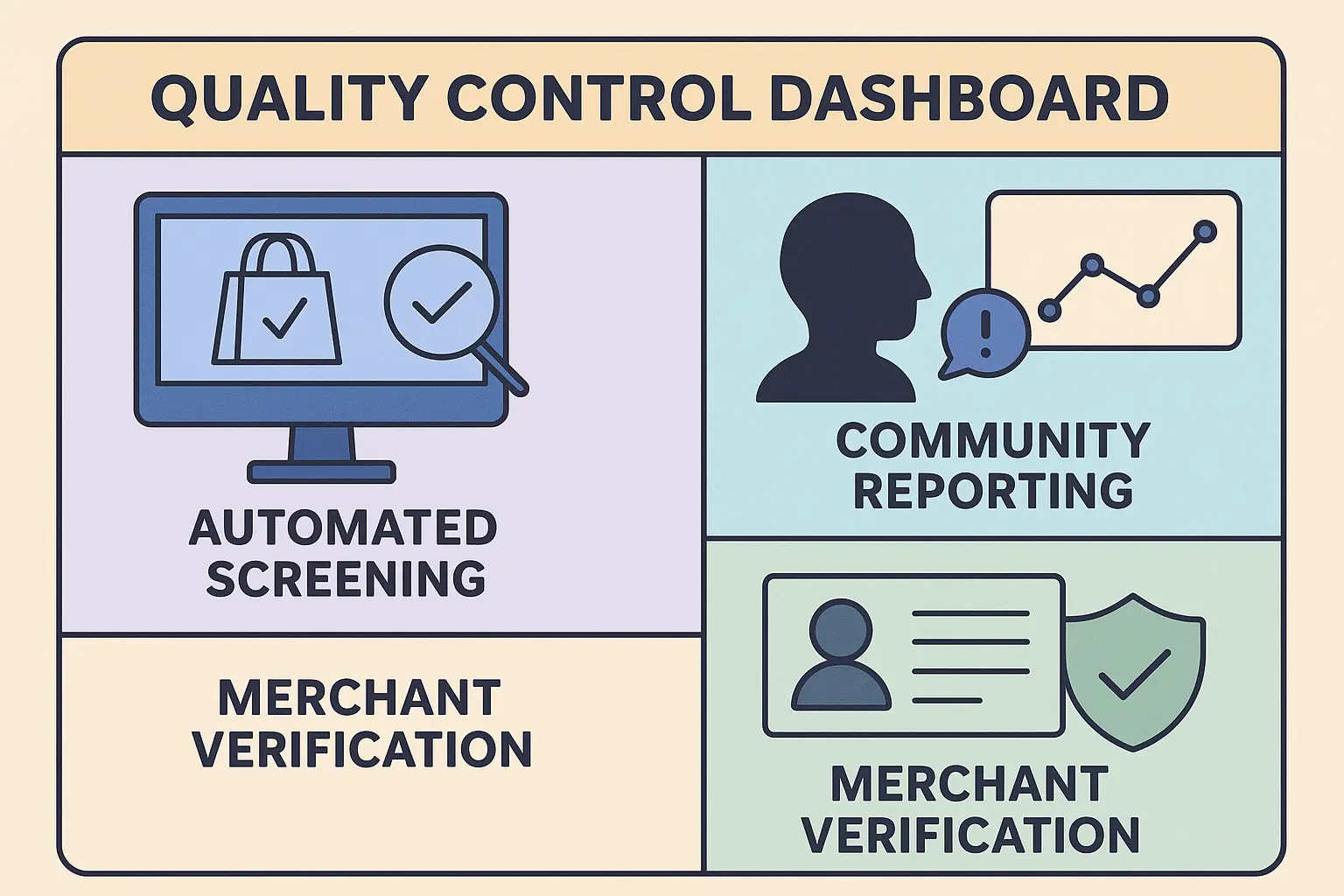
Customer Service Scalability
Customer service scaling was particularly challenging because Indonesian users expected high-touch support, especially when building trust in online commerce. Standard automated systems that worked in other markets often felt impersonal and actually reduced user confidence.
Bukalapak built tiered support systems that provided automated solutions for common issues while ensuring human support was available for complex problems. They created self-service tools that were intuitive for users with varying technical skills.
The customer service approach required constant optimization as user volume grew and issue complexity evolved. Investment in training and tools was essential for maintaining service quality while controlling costs.
Financial Management and Investment Strategy
Financial management evolved significantly as Bukalapak grew from startup to public company. Early-stage financial needs focused on product development and initial market penetration. Later stages required way more sophisticated planning for sustainable growth and public market preparation.
Investor relations became crucial for accessing growth capital while maintaining strategic flexibility. The company needed to balance investor expectations with long-term strategic objectives, especially during competitive pressure periods when short-term metrics might not reflect underlying business strength.
Financial planning required increasingly sophisticated modeling and scenario planning as the business became more complex. Multiple revenue streams, diverse cost structures, and varying market conditions made financial forecasting challenging but absolutely essential.
IPO Preparation and Execution
IPO preparation was a multi-year process that required significant changes to financial reporting, governance structures, and strategic communication. Bukalapak needed to demonstrate sustainable growth and clear paths to profitability while maintaining competitive positioning.
Market timing was crucial for IPO success. The company needed to balance optimal market conditions with internal readiness and competitive dynamics. Waiting too long risked missing favorable market windows, but moving too quickly could expose operational weaknesses.
The IPO execution provided access to growth capital and increased brand credibility, but it also created new pressures for quarterly performance and public market expectations that required ongoing management attention.
Strategic Lessons and Real-World Applications
Bukalapak’s experience offers practical lessons that extend way beyond Indonesian e-commerce. The challenges they faced – building trust in skeptical markets, scaling operations efficiently, competing against well-funded rivals – are common across tons of industries and geographies.
The solutions they developed weren’t always unique, but their execution and adaptation to local conditions created sustainable competitive advantages. Understanding these lessons can help other companies avoid common pitfalls and identify real opportunities in their own markets.
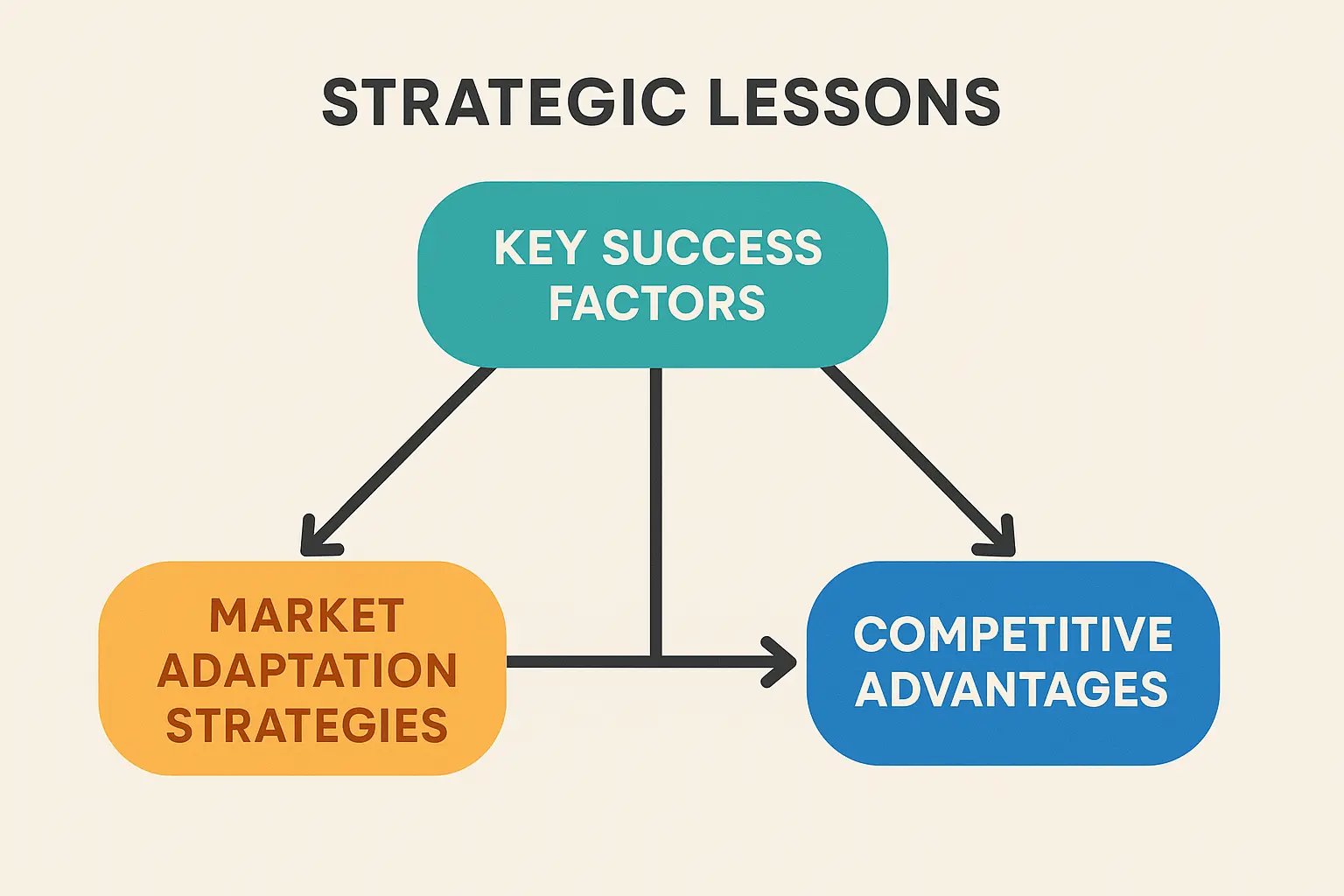
Emerging Market Success Factors
Emerging market success required completely different strategies than developed market expansion. Infrastructure limitations, regulatory complexity, and cultural differences meant that standard business models often failed spectacularly or required massive adaptation.
Bukalapak’s success factors centered on deep market understanding and patient execution. They invested time in understanding local needs rather than assuming global best practices would work unchanged. They built relationships and trust systematically rather than relying purely on product features or marketing spend.
Localization Best Practices
Localization at Bukalapak went way deeper than just translating content into Bahasa Indonesia. They adapted user interfaces for local preferences, modified business processes for local regulations, and created features that matched Indonesian social and commercial behaviors.
The localization process required ongoing investment in market research and user feedback. What worked in Jakarta might completely bomb in Medan or Makassar. Regional differences within Indonesia were significant enough to require customized approaches.
Successful localization created competitive advantages that were incredibly difficult for international players to replicate quickly. Deep cultural understanding took years to develop and couldn’t be easily copied or acquired.
Infrastructure Adaptation Strategies
Infrastructure adaptation was absolutely essential for serving users across Indonesia’s diverse connectivity and device landscape. Standard e-commerce platforms that worked beautifully in developed markets often performed terribly on slower connections and older devices.
Bukalapak’s adaptation strategies included technical optimizations, partnership arrangements, and user experience modifications that worked within infrastructure constraints rather than fighting against them. They built systems that degraded gracefully when conditions were poor.
These infrastructure adaptations often provided way better user experiences than competitors who tried to implement standard solutions without accounting for local conditions. Users appreciated platforms that actually worked reliably in their real usage environments.
Technology and Innovation Insights
Technology innovation at Bukalapak focused on practical solutions rather than cutting-edge features. They prioritized reliability, accessibility, and user experience over technical sophistication that users couldn’t access or didn’t actually value.
The innovation approach was iterative and user-focused. New features were tested extensively with real users in actual usage conditions before full deployment. This prevented costly mistakes and ensured that innovation efforts created genuine value.
Data-Driven Decision Making
Just as businesses today leverage tools for calculating ROAS to measure campaign effectiveness, data-driven decision making was absolutely central to Bukalapak’s operational excellence and strategic planning. They collected extensive data on user behavior, merchant performance, and market trends, then used this information to guide product development and business strategy.
The analytics capabilities evolved from basic reporting to sophisticated predictive modeling as the company grew. Machine learning algorithms helped optimize everything from search results to fraud detection to inventory management.
Data-driven decisions weren’t always popular internally, especially when they contradicted intuition or conventional wisdom. However, the systematic approach to testing and measurement created competitive advantages that were incredibly difficult for competitors to replicate.
Bukalapak’s data-driven approach proved absolutely crucial during the COVID-19 pandemic. They used real-time analytics to identify surging demand for health products and home essentials. Within 48 hours, they had automatically adjusted inventory recommendations for merchants, modified search algorithms to prioritize essential goods, and reallocated marketing spend to support small businesses selling pandemic-related products. This resulted in 150% growth in merchant sales during lockdown periods.
The insights from Bukalapak’s journey are particularly relevant for businesses looking to expand into emerging markets or compete against well-funded rivals. Their success demonstrates that deep market understanding, patient execution, and community-focused strategies can overcome serious resource disadvantages.
For companies considering similar transformations, understanding how to develop high-impact blog topics and content strategies that resonate with local audiences can be crucial for building the kind of community engagement that drove Bukalapak’s success. Our AI-powered analytics and multi-channel integration services help businesses navigate complex market conditions while building sustainable competitive advantages. Whether you’re expanding internationally or transforming your digital presence, we can help you implement growth strategies that prioritize long-term success over short-term metrics.
Ready to build your own sustainable competitive advantage? We can discuss how data-driven strategies and community-focused growth can transform your business results.
What You Can Actually Learn From This (Even If You’re Not Building the Next Amazon)
Strategic Foundation:
-
Actually talk to real customers beyond just looking at demographic data
-
Find underserved market segments that competitors are ignoring
-
Build compliance systems for regulations that keep changing
-
Get local partners for credibility and market access
-
Build mobile-first tech from day one (not as an afterthought)
Operational Excellence:
-
Set up customer service that can handle both simple and complex issues
-
Create quality control that combines automation with human oversight
-
Integrate every payment method your customers actually use
-
Partner with logistics companies that can actually deliver reliably
-
Train merchants instead of just throwing them onto your platform
Growth Optimization:
-
Design referral programs that work with local social dynamics
-
Add game elements that match cultural preferences (not generic points systems)
-
Build community features that keep people engaged between purchases
-
Invest in analytics to understand what’s actually working
-
Test everything systematically before rolling it out everywhere
Final Thoughts
Look, Bukalapak’s success story completely destroys the idea that emerging markets are just smaller versions of developed markets. Their journey from a small Indonesian startup to the country’s first publicly listed tech unicorn shows that winning in complex markets requires way more than just capital and proven playbooks from other regions.
What really impressed me about their methodical approach was how they understood local needs, built trust step by step, and created genuine value for underserved segments. This provides a blueprint that works far beyond e-commerce. Whether you’re expanding into new markets, serving overlooked customer segments, or competing against bigger, better-funded rivals, Bukalapak’s strategies offer practical insights for building sustainable competitive advantages.
Here’s what blew my mind: their patient execution and deep market understanding overcame massive resource disadvantages. While competitors burned through huge funding rounds trying to copy global success formulas, Bukalapak built lasting relationships with merchants and customers that created real switching costs and network effects.
The digital economy keeps creating opportunities for companies that can identify underserved markets and execute with cultural sensitivity and operational excellence. Bukalapak’s journey proves that with the right approach, local players can compete with global giants and build sustainable businesses that serve their communities way better than any international competitor ever could.
For businesses facing similar challenges today, the key lessons are pretty clear: invest in understanding your market deeply, build for your users’ actual conditions rather than ideal scenarios, create genuine value for underserved segments, and stay disciplined in execution even when competitors look like they’re moving faster. Success in challenging markets isn’t about having the most resources – it’s about using the resources you have most effectively to serve real customer needs.
Most of us aren’t going to build the next Bukalapak. But there’s something powerful about watching a small team figure out how to beat companies with 100x their budget. It comes down to actually caring about your customers and being willing to do the boring, hard work that your competitors won’t do.



